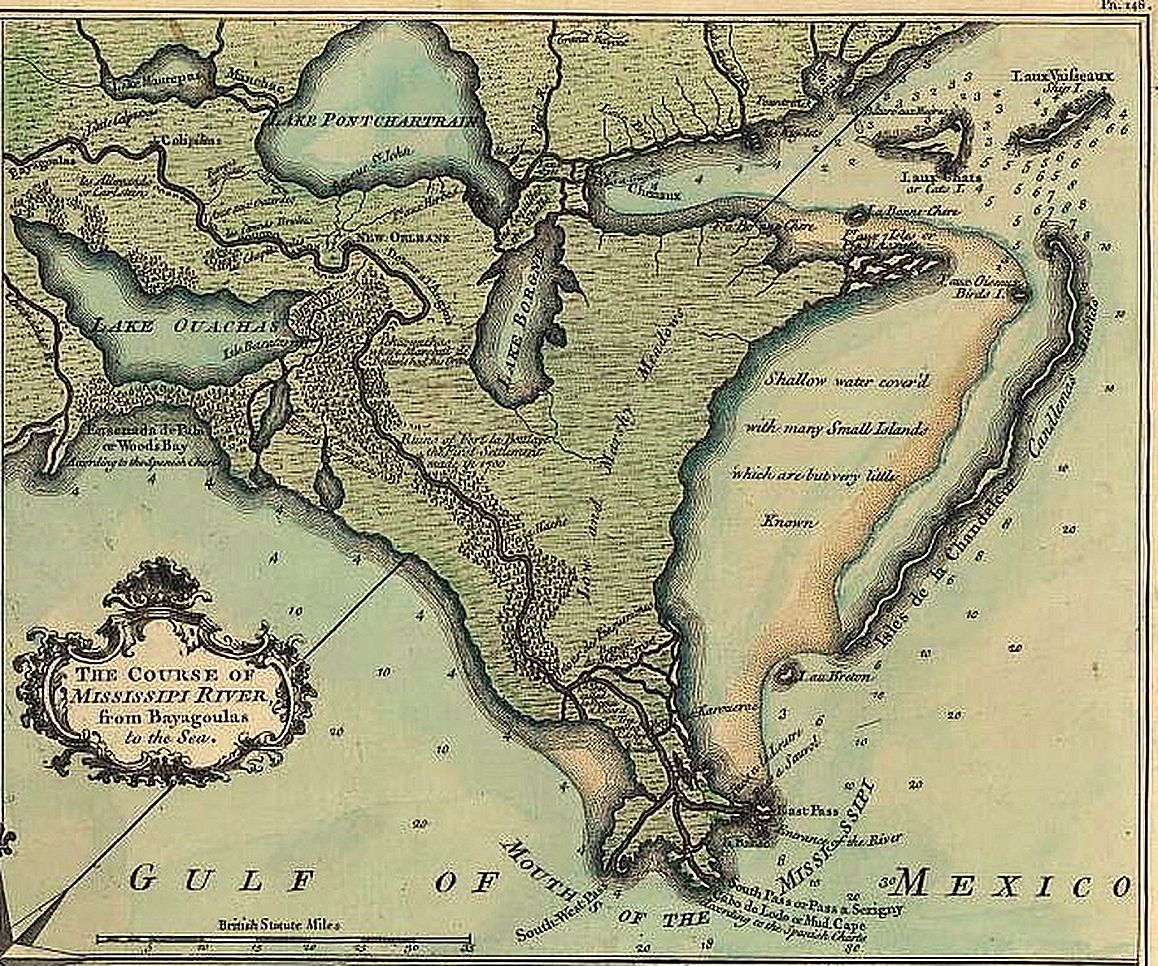The Course of the Mississipi River, 1759
Abstract: "La Balise: A Transimperial Focal Point"
From the late seventeenth through the early nineteenth century, the mouth of the Mississippi River became a place of imperial competition. The British, French, and Spanish all sought to control this outlet, which effectively served as the gateway to the heart of North America. Initially, Europeans had little understanding of what encompassed the entire Mississippi River Valley, but they did understand the importance of controlling major river systems for political, economic, and military reasons. Economically, controlling the Mississippi River would mean that any major trade in the larger region would funnel down to its mouth. As the French established control of this region, what they would call La Louisiane, they constructed a post called la Balise to serve as both an access point and a buffer for inter-imperial contact. Balise means seamark or beacon in French, so its name is very appropriate since it became such an important focal point. Although its original significance was political, economic, and military for French policy makers, the Balize later took on a larger meaning for the mouth of the Mississippi River.
This settlement is understudied and more work needs to take place researching this frontier within a frontier. It never had a large population, it proved difficult to fortify, and it constantly faced obliteration from hurricanes, yet the Balize became a well-known, recognized location. Seventeenth- through nineteenth-century maps provide an important visual representation of this phenomenon. As this period progressed, maps illustrated the shift from the use of terms such as “embouchure”, “boca”, and “mouth” to “Balise”, "Baliza”, and “Balize”. Larger scale maps depicting continental North America, the Gulf of Mexico, and the Caribbean also evince how the Balize flanks and complements New Orleans as the distinct names along the Gulf Coast. Both points illustrate the transimperial understanding of the role of the Balize as toponym for the mouth of the Mississippi River.
Biographical information
Justin T. Dellinger is a second-year doctoral student at the University of Texas at Arlington. He received his Bachelor’s Degrees in History and Spanish from the University of Texas at Austin in 2004. After teaching for a few years, he returned to school and earned his Master’s Degree in History at the University of Texas at Arlington in 2010. His primary area of study is eighteenth-century Louisiana, employing transatlantic and cartographic approaches in his research.
More on the annual meeting can be found here


No comments:
Post a Comment